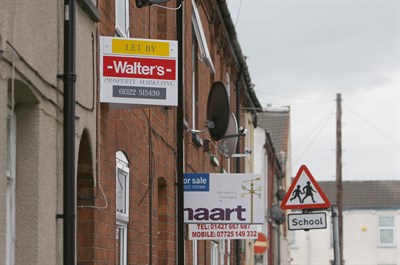Temporarily withdrawing a property from the market can improve its chances of selling later, according to new data from property analytics firm TwentyEA.
The research reveals that over half (53.4%) of residential property sales in 2024 were agreed within the first five weeks of a listing, with nearly three-quarters (75.7%) occurring within the first three months. After that, the likelihood of a sale drops sharply—to just 14.5%.
This trend suggests that if a property does not sell early, taking it off the market for a period may be more effective than keeping it listed long-term.
In 2024, around 550,000 properties were withdrawn from the market. Of those, 90,000 were relisted after a break of three months or more. Interestingly, whether the relisted property returned at a lower price had little impact on the outcome:
+ 49,000 were relisted at a reduced price, with a 42.4% chance of selling.
+ 41,000 were relisted at the same or a higher price, with a 42.1% chance of selling.
The findings suggest that time off the market may be as influential as price adjustments when it comes to improving sale prospects.
A week-by-week breakdown of sales progression further reinforces the importance of early momentum: 59.4% of all listings that sold in 2024 agreed a sale in the initial weeks, with diminishing returns the longer a property remained unsold.
Katy Billany, executive director at TwentyEA, said: “A 42% likelihood of sale in both cases is substantially higher than the 14.5% chance of selling if a vendor had not withdrawn their property.
“It’s very interesting that it makes virtually no difference as to whether or not the price was lowered and goes to demonstrate that timing and market demand often matter more than minor price adjustments. That said, when the property is re-listed, the price should always be set strategically to reflect current market conditions.
“Our analysis suggests that if time is not a critical factor, sellers should consider withdrawing their property from the market if it hasn’t sold within the first few weeks. Allowing a rest period of at least three months can significantly improve the chances of success.”
Further analysis by TwentyEA found it typically takes 123 days from listing to exchange and 200 days to completion.
| From listing to offer accepted (days) | Listing to exchange | Listing to completion | |
| 2019 | 75 | 90 | 165 |
| 2020 | 80 | 97 | 177 |
| 2021 | 58 | 101 | 159 |
| 2022 | 42 | 129 | 171 |
| 2023 | 61 | 121 | 182 |
| 2024 | 71 | 120 | 191 |
| 2025 | 77 | 123 | 200 |
Data covers January 1 to August 31, 2025
Billany added: “An average of 123 days from listing to exchange and 200 days to completion shows just how drawn-out the moving process has become.
“Streamlining this timeline through better communication and upfront information would make a real difference for both buyers and sellers.”








